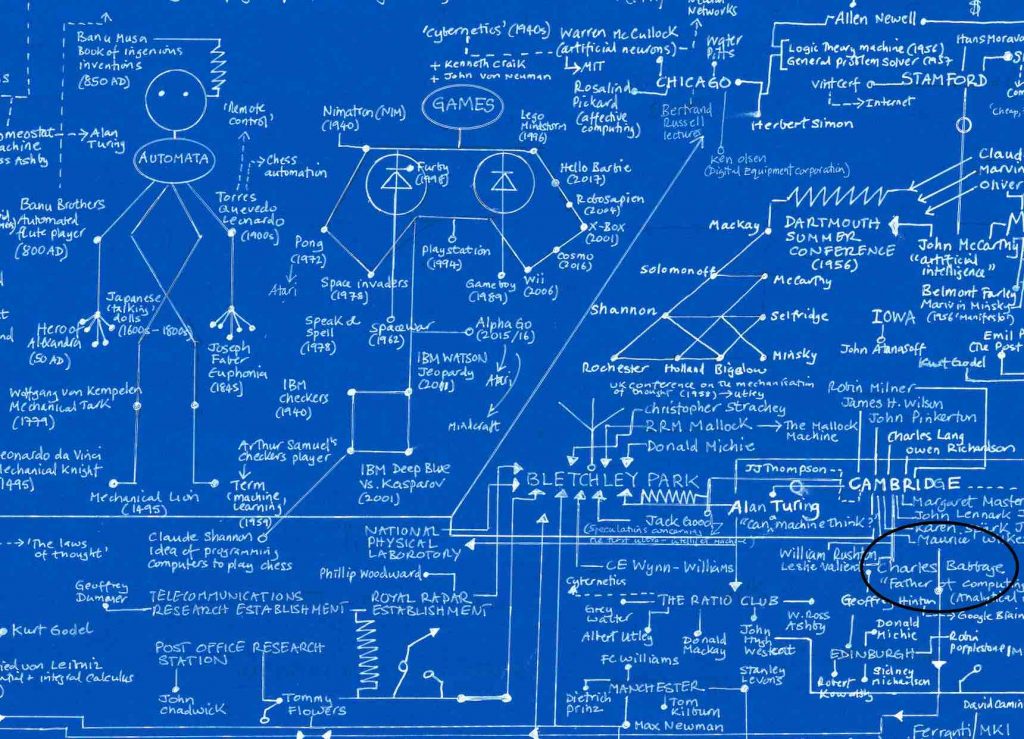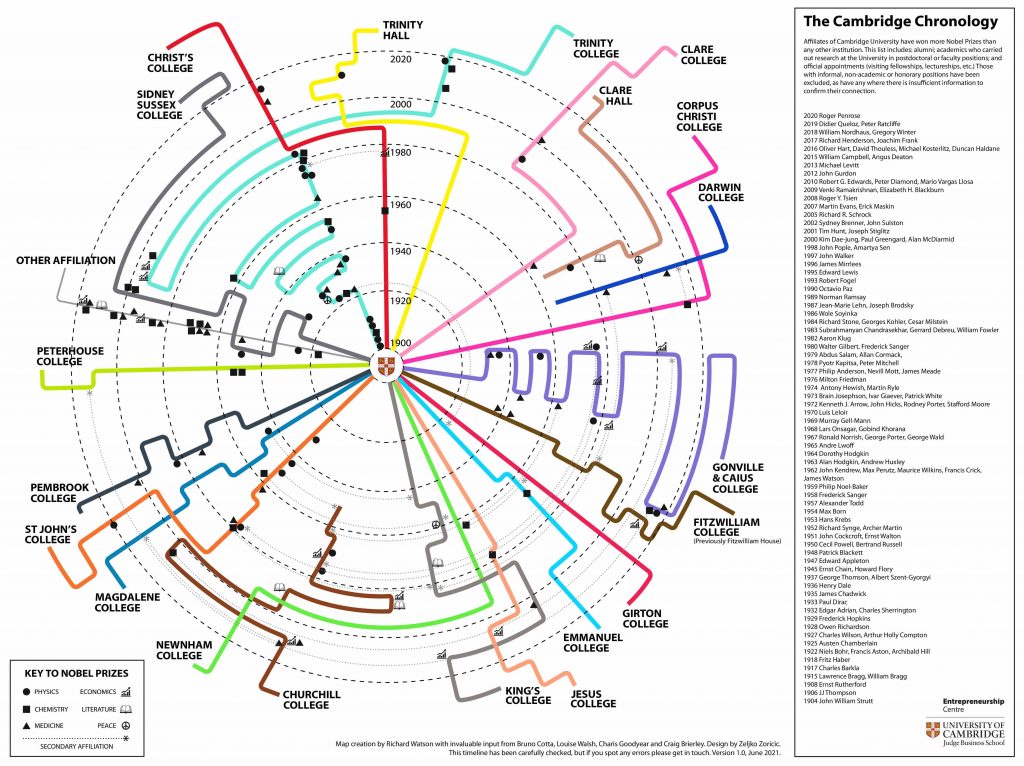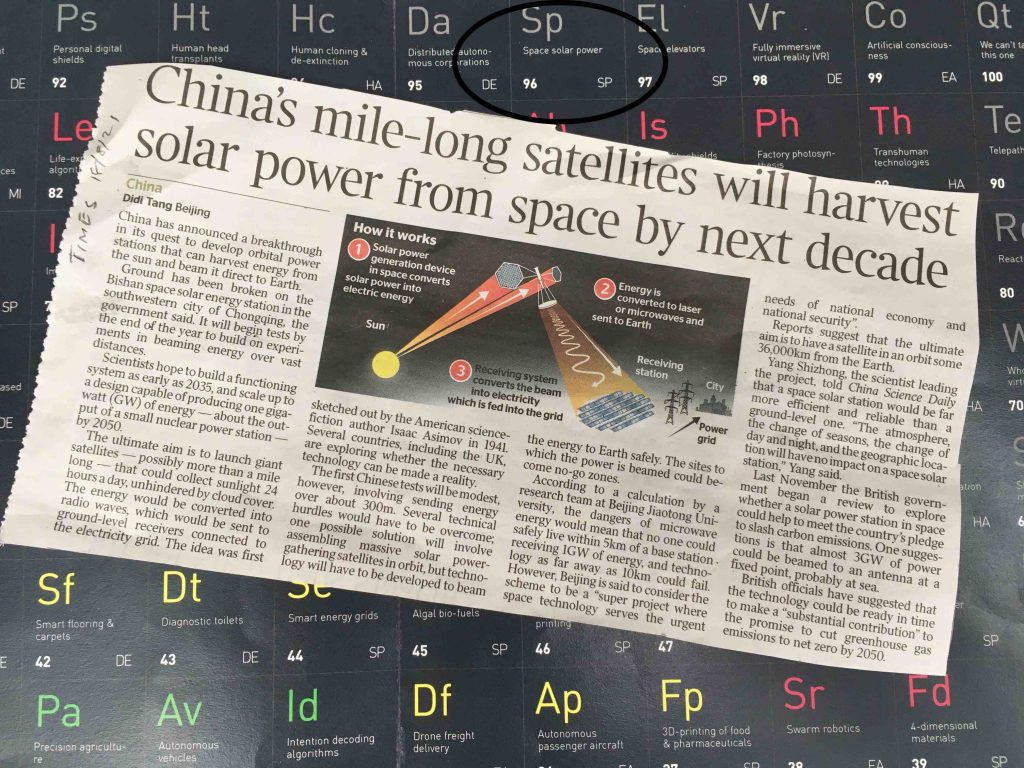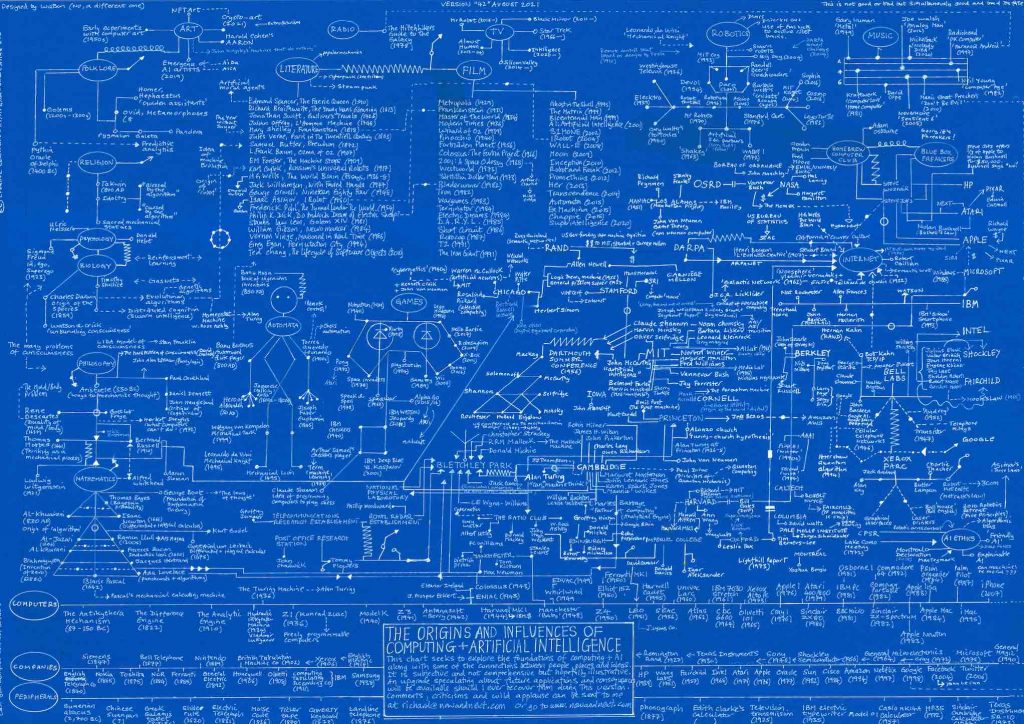Just worked out what’s wrong visually with my AI timeline….be back soon.


This visualisation of Nobel Prizes won by colleges and other affiliates of Cambridge University between 1905 and 2020 shows that the University has won Prizes more than any other institution in the world. It also demonstrates the importance of pure research and the world-changing impact of unbridled curiosity and speculation. Along with the power of accidental collisions with people and information this is perhaps something that successful entrepreneurs have in common with Nobel Prize winning academics – the ability to see the world as it is and ask ‘why?’ or to see the world as it could be and ask ‘why not?’.
But what of the future? What might a physics prize be won for in the year 2040 and how might such research eventually be applied to real world problems? Moreover, how might the Nobel Prizes themselves evolve? Could there be a new category created in 2029 for data modelling or data ethics perhaps? And why is there still no suitable accommodation made for aspects of environmental science, artificial intelligence or philosophy relating to tech?
With some luck, a future Nobels graphic is on the cards….

So, the Chinese believe they may have a functioning space solar facility by the year 2035 in which solar energy is collected in space and beamed back to earth via radio waves. I featured space solar technology on the outer edge of my Table of Disruptive Technologies in 2018, but it seems to be happening faster than expected. Then again, this could simply be propaganda. But if it isn’t there could be trouble ahead. Don’t be fooled, data isn’t the new oil, electricity is, and if oil was behind war in the 20th Century so electricity will be behind war in the 21st Century. China has a vast population, but few natural resources and strategically needs to be energy self-sufficient as soon as possible. If energy moves to space then space could be the location of a war between China and the US.

A history of computing and artificial intelligence on a single sheet of paper was always a little bit ambitious. Perhaps a little foolish too. Anyway, I’d like to think of this as the equivalent of Joe Cocker singing With a Little Help from My Friends at Woodstock in 1969 – an exhausting yet transcendent moment where mind and body meld together and time stands still. In reality it ended up taking me over and has become a bit of fragmented failure, although maybe one should think of it in quantum terms – simultaneously good and bad, its fate being linked to random events that may or may not occur.
Regardless, it’s been more fun to do than an adult colouring-in book. I did learn quite a bit doing it too (e.g. Nolan Bushnell saying “no” to the offer of 1/3 of Apple Computer for $50,000). It has perhaps laid some foundations to ‘map’ the future of artificial intelligence too. Make what you like of it. If you want to print this ask me for a higher resolution file (which I’ll happily supply for free) or I might print a few large copies myself, so do ask if you want one (smalll charge to cover printing and postage).
